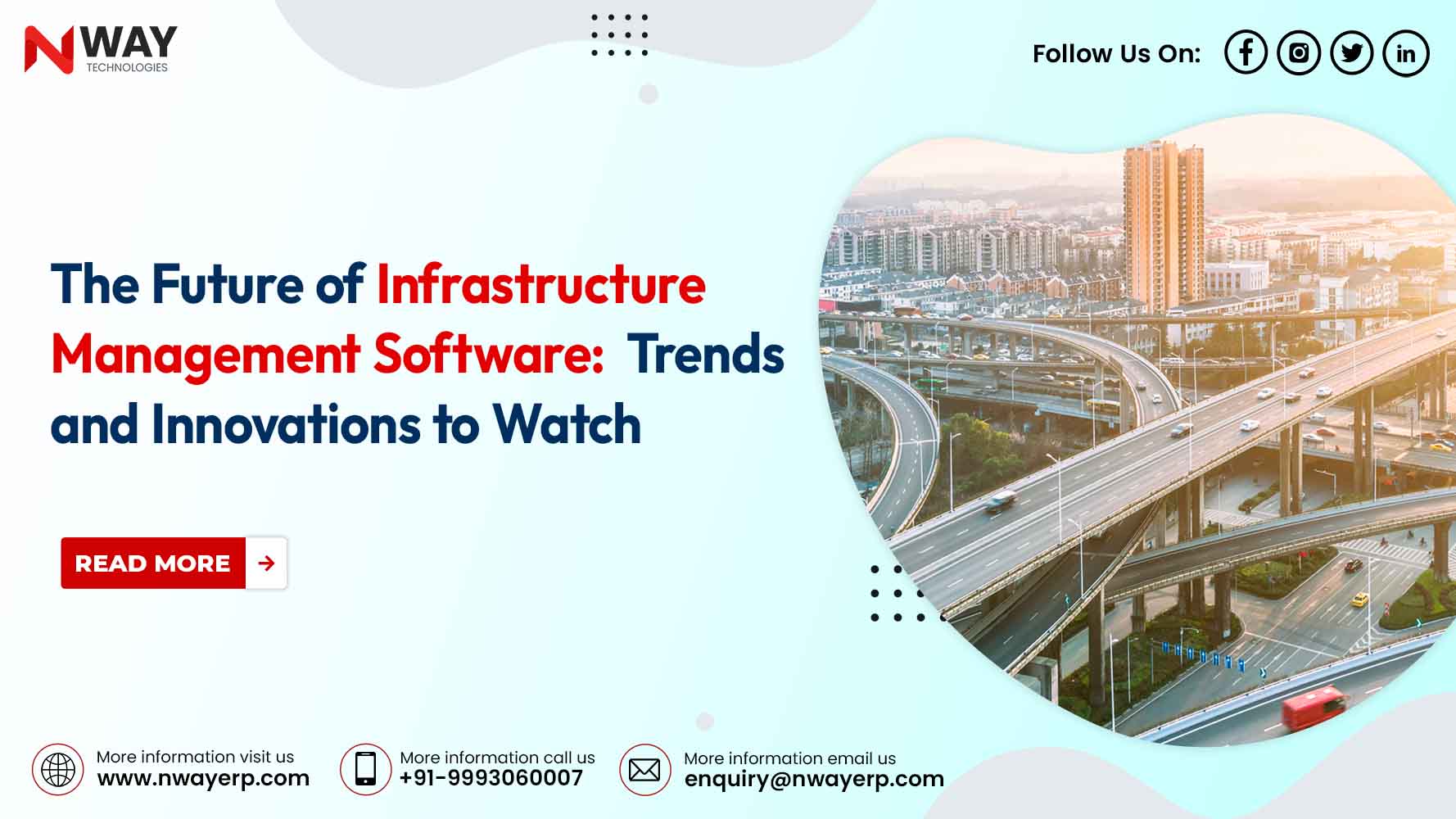Welcome to the blog of infrastructure management software, a world dominated by cutting-edge trends and creative solutions. Because of ERP software, technology is advancing swiftly, and as a result, infrastructure management is evolving to meet contemporary demands. This article will examine the most recent developments and trends affecting the market for infrastructure management software.
Importance of Infrastructure Management Software
Infrastructure management software ensures the smooth operation of physical assets such as buildings, bridges, roads, etc. Because infrastructure software offers a centralised platform, businesses can efficiently plan, schedule, and execute out maintenance on their infrastructure assets. With proper infrastructure management software, companies can track their assets, errors, higher costs, poor decision-making, and increased business management-related work.
Current Challenges in Infrastructure Management
Before thinking about the future of the infrastructure business, it is important to understand what difficulties you will face in running your business. Aging infrastructure is one of the primary issues, as many assets are nearing the end of their useful lives and require costly maintenance and upgrades. Another issue is that businesses often rely on manual processes and outdated technology to manage their processes, resulting in a need for more visibility and real-time information. This results in more downtime and reactive maintenance techniques.
The complexity of infrastructure systems also makes management and performance improvement challenging. Detecting and addressing problems with so many interwoven pieces and relationships is difficult. Last but not least, financial and resource constraints make infrastructure management even more difficult. Therefore, firms must discover cost-effective solutions that extend the useful life of their assets.
Trends Shaping the Future of Infrastructure.
As enterprises strive for cost-effectiveness, efficiency, and optimization in managing their infrastructure assets, several emerging themes are expected to affect the development of infrastructure management software. These advancements include cloud-based services, the incorporation of AI and ML, the usage of Internet of Things (IoT) devices, and the application of automation and predictive analytics.
Cloud-based Infrastructure Management Solutions
Infrastructure management solutions in the cloud are growing in popularity due to their scalability, flexibility, and accessibility. Businesses can eliminate the need for on-premises equipment, reduce costs, and maintenance by transferring infrastructure management software to the cloud. Cloud-based solutions provide real-time data sharing and collaboration, allowing stakeholders to make educated decisions based on up-to-date information.
Additionally, cloud-based infrastructure management software provides enhanced security and data backup features, ensuring critical infrastructure data is protected from loss or unauthorized access. The risk of data loss due to hardware malfunction or security breaches is eliminated, giving organizations peace of mind and allowing them to focus on their core business operations.
Artificial Intelligence and Machine Learning in Infrastructure Management Software
Machine learning (ML) and Artificial Intelligence (AI) transform how businesses manage their infrastructure assets. Infrastructure management software driven by AI can find patterns, forecast failures, and offer actionable insights for effective decision-making by evaluating vast volumes of data. ML algorithms may learn from prior data to enhance asset performance, optimize maintenance schedules, and forecast upcoming failures. It allows organizations to be proactive and reduce downtime.
AI-powered analytics also enable predictive maintenance, which involves monitoring the condition of assets in real time and identifying potential issues before they cause failures. It reduces costs associated with reactive maintenance and extends the lifespan of infrastructure assets by addressing problems early.
Internet of Things (IoT) Integration in Infrastructure Software
Integrating Internet of Things (IoT) devices into infrastructure management software expands the potential for real-time monitoring and asset management. IoT devices such as sensors and actuators can be deployed across infrastructure assets to collect data on various parameters, including temperature, vibration, humidity, and energy consumption. When this data is sent to infrastructure software, it provides crucial information on the functionality and state of their assets.
Organizations can switch from reactive to proactive maintenance practices with IoT integration. For instance, sensors can spot abnormalities in an asset’s behaviour, like aberrant temperatures or vibration levels, and send out alarms that must be addressed immediately. It decreases downtime and increases asset reliability by allowing organizations to resolve problems before they become significant breakdowns.
Additionally, IoT connectivity provides remote asset monitoring, lowering the need for manual inspections and the possibility of human error. Real-time data from IoT devices can be used to optimize asset performance, improve energy efficiency, and identify areas for process improvement, leading to cost savings and enhanced sustainability.
Automation and Predictive Analytics in Infrastructure Management
Future infrastructure management software will rely heavily on automation and predictive analytics. Organizations can free up important resources and concentrate on key initiatives by automating regular processes. For instance, automation can speed up the creation of work orders, planning maintenance tasks, and monitoring asset performance. It lowers administrative costs and guarantees maintenance tasks completed promptly and effectively.
Organizations can make data-driven decisions and maximize asset performance thanks to predictive analytics powered by AI and ML algorithms. By analysing data and patterns, predictive analytics can forecast future asset behaviour, estimate remaining useful life, and recommend maintenance tasks. As a result, businesses may better schedule maintenance work, reduce unforeseen downtime, and extend the life of their infrastructure assets.
Conclusion
In conclusion, the future of infrastructure management software is bright and promising. Trends like cloud-based solutions, artificial intelligence, machine learning, Internet of Things (IoT) integration, automation, and predictive analytics to revolutionise the sector as organisations strive for optimisation, efficiency, and cost-effectiveness in managing their infrastructure assets.



